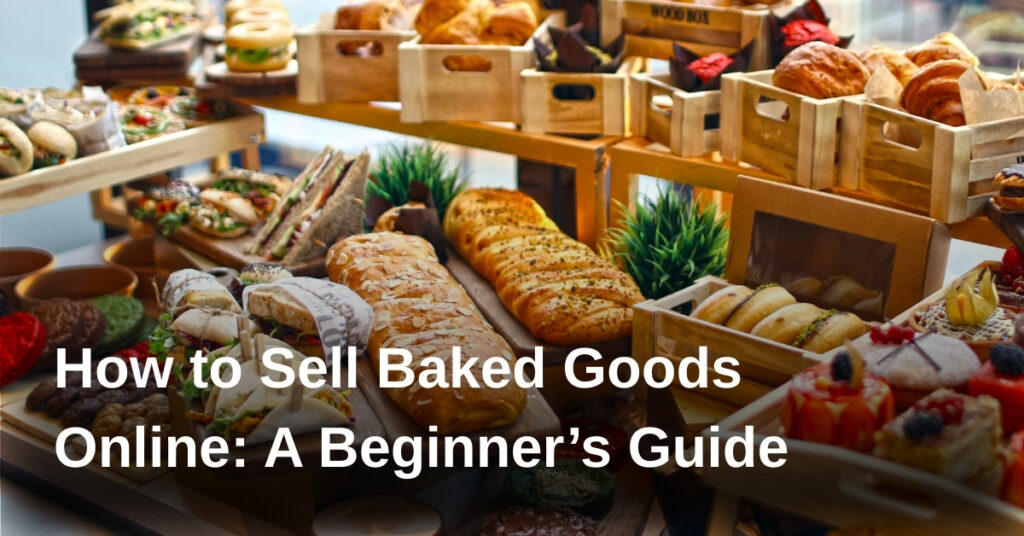
Understanding the Legal Requirements for Selling Baked Goods Online
Navigating the legal landscape when you sell baked goods online can feel overwhelming at first. Regulatory requirements may vary depending on your location and the scale of your business. Typically, you will need some form of business license or registration, but the specifics can differ greatly between regions. Local health departments usually set food safety standards, yet there are exceptions involving cottage food laws, which allow certain homemade products to be sold with fewer restrictions. These laws are not always straightforward, though. Therefore, you might need to consider:
- Food safety certifications: basic training may be required
- Product labeling: accurate ingredient and allergen information must often be displayed
- Packaging regulations: rules may govern how you package and transport goods
Since regulations change periodically, staying informed is crucial, especially as your efforts to sell baked goods expand. Checking with local authorities before you sell baked goods can help ensure compliance and peace of mind.
You Can Also Review These:
How to Sell Baked Goods Online: Full Guide (+17 Best Platforms)
Choosing the Right Online Platforms for Your Bakery Business
Selecting suitable online platforms is crucial when you aim to sell baked goods effectively. Not all marketplaces or social channels deliver the same results for every bakery, because each has unique audiences and features. For instance, some platforms focus on visual presentation, which suits artisan bakeries, while others support quick ordering or local delivery. Therefore, it can help to analyze your target customers’ habits before you commit to one or more. Additionally, fees and support systems vary across websites, affecting your profit margins and satisfaction. Although it’s tempting to list your products everywhere, sometimes choosing two or three strategic channels is more impactful. There are also platforms tailored uniquely for food businesses, offering specialty features such as allergen labeling or customizable menus. In my opinion, balancing usability, reach, and cost will influence your online presence and ability to sell baked goods efficiently. Despite this, some trial and error may be necessary.
How to Create an Attractive and User-Friendly Online Store
To sell baked goods successfully online, your store must captivate visitors and make shopping smooth. Start by choosing a visually appealing layout that matches your brand’s personality. Consistent colours and clear images set the right tone, whereas cluttered pages can overwhelm buyers and hurt sales. Navigation plays a quiet but powerful role in the user experience; easy-to-find categories and intuitive menus help, especially for those wanting to sell baked goods without confusion. Additionally, mobile responsiveness is essential, as buyers may prefer browsing on various devices. Nearly seamless checkout is vital, yet often overlooked—complicated processes can lead to abandoned carts. Testimonials or customer reviews sometimes reassure new visitors, although not every store needs them. Product descriptions should be precise; however, a touch of creativity draws attention. Lastly, always test your site before launching to ensure every click leads buyers closer to sell baked goods delightfully and efficiently.
Essential Packaging and Shipping Tips for Baked Goods
Ensuring your treats arrive fresh and intact is crucial when you sell baked goods online or in person. Packaging matters as much as the recipe itself. Start by assessing the texture and moisture of each product, since cookies and cakes have very different shipping needs. For cookies, airtight containers or heat-sealed bags generally work well; whereas, cakes or pastries might require additional padding and sturdy boxes. Always opt for food-safe wrappings to preserve quality and taste. If you plan to sell baked goods that are frosted or delicate, consider using insulated liners and cool packs, especially during warmer seasons. Choose shipping carriers carefully—some offer quicker delivery options, though results may vary depending on location. You might also use bubble wrap or compostable fillers to protect the shape and appearance. Ultimately, even the best packaging can’t guarantee perfection, but these steps will greatly increase the chances your sell baked goods reach customers just as intended.
Building a Standout Brand for Your Online Bakery
Creating a memorable brand presence is essential if you wish to successfully sell baked goods online. Your bakery’s identity should convey both your values and the unique flavors you offer. Start by crafting a logo and selecting colors that echo the essence of your treats. Storytelling also plays a crucial role; customers often connect more deeply with brands that share personal anecdotes or inspiration. Accordingly, your website and social media should reflect your bakery’s journey and aspirations. The way you sell baked goods goes beyond just listing products; it’s about evoking emotions and trust. High-quality photographs are extremely influential in showcasing your cakes, cookies, or pastries. Additionally, develop a distinctive voice in all communications to keep your brand consistent and relatable. Over time, these deliberate design and messaging choices can turn casual browsers into loyal customers who prefer to sell baked goods from your shop above others.
Effective Pricing Strategies for Maximising Profits
Designing the right pricing strategy can make all the difference when you aim to sell baked goods successfully. The process is rarely straightforward; consumer psychology plays a subtle but significant role in how buyers perceive value. For instance, charm pricing—setting prices just below a whole number—can often make products seem more affordable, yet it may not always fit premium positioning. Similarly, introducing tiered options can encourage customers to upgrade, although some may gravitate toward the lowest price regardless.
“Finding the sweet spot often requires a blend of data, observation, and a little intuition.”
Additionally, understanding seasonal demand and local competition is key: raising prices slightly during festivals might boost profits, but only if customers feel they’re getting added value. Trial periods for new pricing can provide useful feedback. Ultimately, a flexible approach ensures you respond to market changes while protecting your margins as you sell baked goods.
Crafting Compelling Product Descriptions and Food Photography
Showcasing your ability to Sell baked goods hinges on more than just the taste—it’s equally about how you present and describe them. Product descriptions should evoke emotion and paint a sensory picture for potential customers. Instead of merely listing ingredients, focus on the experience: aroma, texture, and the joy of indulgence. For example, saying “buttery, flaky croissants baked fresh each morning” is more evocative than “croissants for sale.” Sometimes, details about sourcing or craftsmanship add another layer, though it’s not always clear where to draw the line between enticing and overwhelming. Additionally, food photography plays an essential role that should not be underestimated. Soft natural light, careful styling, and honest composition can make your products irresistible online. In summary, to convincingly Sell baked goods online, blend appealing descriptions with inviting images. Still, a little mystery in both can spark curiosity and tempt potential customers to try for themselves.
Leveraging Social Media Marketing to Boost Your Online Bakery Sales
Social media marketing has become almost indispensable for online bakeries aiming to sell baked goods more effectively. Platforms like Instagram and Facebook offer visually-driven features that beautifully showcase your products, creating temptation and curiosity. Running interactive posts or polls can encourage users to engage, which, in turn, boosts your visibility organically. However, not everything is straightforward; algorithms can sometimes shift unexpectedly, making it challenging to maintain consistent reach. Nevertheless, collaborating with local influencers may widen your audience and build trust, yet the results can vary. Regularly sharing high-quality photos, limited-time offers, or customer stories often intrigues followers and subtly persuades them to sell baked goods through word-of-mouth. Tracking post performance is also key, as it reveals what your audience values—still, preferences sometimes change quickly. Ultimately, while strategy is important, balancing authenticity and creativity is perhaps the most reliable way to sell baked goods online through social media.
Managing Orders, Payments, and Customer Service Efficiently
Running a business to sell baked goods involves more than baking treats; operational efficiency is key. Orders can arrive suddenly or in bulk, so a clear and organized system to track each step helps prevent mistakes. Manual processes might still work for smaller volumes, but as your customer base grows, upgrading to a digital order management system becomes almost unavoidable. Payment methods, whether cash, card, or mobile, should integrate smoothly into your workflow—some systems even automate invoice generation. Customer service, on the other hand, doesn’t always have a straightforward formula. Responding to queries promptly and warmly builds loyalty, yet even the best intentions may not resolve every issue. Staying flexible helps navigate occasional mix-ups or unexpected requests. In my opinion, balancing technology with a personal touch not only keeps customers returning but also allows you to fine-tune how you sell baked goods over time. Ultimately, efficiency translates to happier clients and a thriving business that continues to sell baked goods with ease.
Tips for Scaling and Growing Your Online Baked Goods Business
Scaling an online baked goods business can feel overwhelming at first, but a few strategic steps may help set the stage. Begin by evaluating which bestsellers drive most of your sales, then focus on refining recipes, sourcing reliable suppliers, and optimising packaging for shipping. Customer feedback matters; small tweaks often make a product more appealing and, in turn, help you sell baked goods more easily. Consistent branding fosters loyalty, so invest in visuals and messaging that reflect your unique style. Expanding delivery zones might seem risky, but it’s frequently how new markets are captured. Digital marketing also plays a significant role—social media posts and subscriber emails can boost awareness and urge customers to sell baked goods via word-of-mouth. Lastly, automation tools—whether for order management or inventory—save time as things grow. Sometimes, you’ll need to experiment to discover the best route to sell baked goods widely and efficiently.
Conclusion
Starting to sell baked goods on the internet may feel daunting, yet with the right steps, it quickly becomes rewarding. By focusing on quality, creating an inviting online presence, and understanding your audience, you’ll build trust and entice loyal customers. Additionally, clear communication and consistent branding help your treats stand out in a busy marketplace. Despite the challenges, sharing your delicious creations can be a fulfilling venture, so take each day as an opportunity to grow and improve. In my opinion, your passion and dedication are the real ingredients for success.
Related Articles:
Top 7 Digital Products You Can Sell for Passive Income
